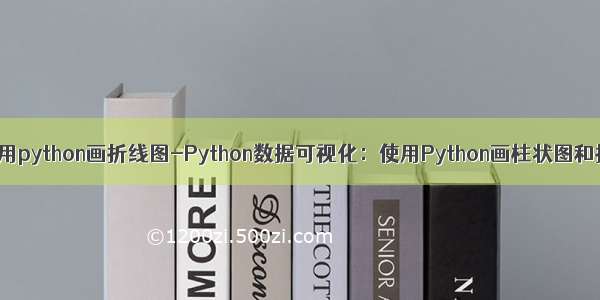
因为在各种场景下需要各种实验数据的对比图像,有的中还要求dpi,这些在Python中的matplotlib中都可以实现,下面是总结的各种画图命令。
打包文件:/download/pcb931126/10864654
"""
#Python中matplotlib中画图工具
#姓名:pcb
#时间:.12.20
"""
#引入画图所需要的库文件
import matplotlib.pyplot as plt
import numpy as np
import pandas as pd
from matplotlib.ticker import MultipleLocator
from mpl_toolkits.mplot3d import Axes3D
"""
画折现图
"""
# input_values=[1,2,3,4,5]
# squares=[1,4,9,16,25]
#
# plt.plot(input_values,squares,linewidth=5) #设置线宽
# plt.title("Square Number",fontsize=24) #设置图题
# plt.xlabel("Value",fontsize=14) #设置x轴的标签以及标签的大小
# plt.ylabel("Square of value",fontsize=14) #设置y轴的标签以及标签的大小
# plt.tick_params(axis="both",labelsize=14) #设置刻度标记的大小
#
# plt.show()
"""
绘制散点图
"""
# plt.scatter(2,4,s=200)
# plt.title("Square Number",fontsize=24) #设置图题
# plt.xlabel("Value",fontsize=14) #设置x轴的标签以及标签的大小
# plt.ylabel("Square of value",fontsize=14) #设置y轴的标签以及标签的大小
# plt.tick_params(axis="both",which="major",labelsize=14) #设置刻度标记的大小
# plt.show()
"""
创建窗口子图
设置子图基本元素
"""
# x=np.arange(-5,5,0.1)
# y=x*3
# fig=plt.figure(num=1,figsize=(15,8),dpi=80) #开启一个窗口,同时设置大小分辨率,参数:窗口个数,窗口大小,分辨率
# ax1=fig.add_subplot(2,1,1) #使用fig添加子图,参数:行数、列数、第几个
# ax2=fig.add_subplot(2,1,2) #使用fig添加子图,参数:行数、列数、第几个
#
# #####设置子图窗口
# ax1.set_title("python_drawing",fontsize=12) #设置图题以及字体大小
# ax1.set_xlabel("x_name",fontsize=12) #设置x轴的字体大小
# ax1.set_ylabel("y_name",fontsize=12) #设置y轴的字体大小
# plt.axis([-6,6,-10,10]) #设置横纵坐标范围,这个子图中被分为一下两个函数
# ax1.set_xlim(-5,5) #设置横轴范围,单独给图1设置x轴的范围
# ax1.set_ylim(-10,10) #设置纵轴范围,单独给图1设置y轴的范围
# xmajorLocator = MultipleLocator(2) #定义横向主刻度标签的刻度差为2的倍数。就是隔几个刻度才显示一个标签文本
# ymajorLocator = MultipleLocator(3) #定义纵向主刻度标签的刻度差为3的倍数。就是隔几个刻度才显示一个标签文本
# ax1.xaxis.set_major_locator(xmajorLocator) #应用定义的横向主刻度格式
# ax1.yaxis.set_major_locator(ymajorLocator) #应用定义的纵向主刻度格式
# ax1.xaxis.grid(True,which="major") #x坐标轴网格使用主刻度格式
# ax1.yaxis.grid(True,which="major") #y坐标轴网格使用主刻度格式
# ax1.set_xticks([]) #去除坐标刻度
# ax1.set_xticks((-5,-3,-1,1,3,5)) #设置坐标刻度
#
# #设置刻度的显示文本,rotation旋转角度(>0顺时针旋转、<0逆时针旋转),fontsize字体大小
# #ax1.set_xticklabels(labels=['x1','x2','x3','x4','x5'],rotation=-30,fontsize='small')
#
# #标志marker为设置线的格式,具体标志如下所示:
# """
# o’ 圆圈
# ‘.’ 点
# ‘D’ 菱形
# ‘s’ 正方形
# ‘h’ 六边形1
# ‘*’ 星号
# ‘H’ 六边形2
# ‘d’ 小菱形
# ‘_’ 水平线
# ‘v’ 一角朝下的三角形
# ‘8’ 八边形
# ‘
# ‘p’ 五边形
# ‘>’ 一角朝右的三角形
# ‘,’ 像素
# ‘^’ 一角朝上的三角形
# ‘+’ 加号
# ‘\ ‘ 竖线
# ‘None’,’’,’ ‘ 无
# ‘x’ X
#
# """
# #标志color为颜色,具体标志如下所示
# """
# b 蓝色
# g 绿色
# r 红色
# y 黄色
# c 青色
# k 黑色
# m 洋红色
# w 白色
#
# """
#
# plot1=ax1.plot(x,y,marker='o',color='g',label='legend1')
#
#
# # #线图:linestyle线性,alpha透明度,color颜色,label图例文本
# plot2=ax1.plot(x,y,linestyle='--',alpha=0.5,color='r',label='legend2')
#
# ax1.legend(loc='upper left') #显示图例,plt.legend()
# ax1.text(2.8, 7, r'y=3*x') #指定位置显示文字,plt.text()
# #
# # #添加标注,参数:注释文本、指向点、文字位置、箭头属性
# ax1.annotate('important point', xy=(2, 6), xytext=(3, 1.5), arrowprops=dict(facecolor='black', shrink=0.05))
# #
# #显示网格。which参数的值为major(只绘制大刻度)、minor(只绘制小刻度)、both,默认值为major。axis为'x','y','both'
# ax1.grid(b=True,which='major',axis='both',alpha= 0.5,color='skyblue',linestyle='--',linewidth=2)
#
# # # 在当前窗口添加一个子图,rect=[左, 下, 宽, 高],是使用的绝对布局,不和以存在窗口挤占空间
# axes1 = plt.axes([.2, .3, .1, .1], facecolor='y')
# #
# # # 在子图上画图
# axes1.plot(x,y)
#
# #savefig保存图片,dpi分辨率,bbox_inches子图周边白色空间的大小
# plt.savefig('aa.png',dpi=400,bbox_inches='tight')
#
# #打开窗口,对于方法1创建在窗口一定绘制,对于方法2方法3创建的窗口,若坐标系全部空白,则不绘制
# plt.show()
"""
极坐标图
"""
# fig=plt.figure(2) #新开启一个窗口
# ax1=fig.add_subplot(1,2,1,polar=True) #启动一个窗口的极坐标子图
# theta=np.arange(0,2*np.pi,0.02) #角度数列值
# ax1.plot(theta,2*np.ones_like(theta),lw=2) #画图,参数:角度,半径,线宽
# ax1.plot(theta,theta/6,linestyle="--",lw=2) #画图,参数:角度,半径,linestyle样式,lw线宽
#
# ax2=fig.add_subplot(1,2,2,polar=True) #启动一个极坐标子图
# ax2.plot(theta,np.cos(5*theta),linestyle="--",lw=2)
# ax2.plot(theta,2*np.cos(4*theta),lw=2)
# ax2.set_rgrids(np.arange(0.2,0.2,0.2),angle=45) #距离网格轴,轴线刻度和显示位置
# ax2.set_thetagrids([0,45,90]) #角度网格轴,范围0-360度
# plt.savefig('11.png',dpi=400,bbox_inches='tight')
# plt.show()
"""
柱状图
"""
# plt.figure(3)
# x_index=np.arange(5) #柱的索引
# x_data=("A","B","C","D","E")
# y1_data=(20,35,30,35,27)
# y2_data=(25,32,34,20,25)
# bar_width=0.35 #定义一个数字代表柱的宽度
# rects1 = plt.bar(x_index, y1_data, width=bar_width,alpha=0.4, color='b',label='legend1') #参数:左偏移、高度、柱宽、透明度、颜色、图例
# rects2 = plt.bar(x_index + bar_width, y2_data, width=bar_width,alpha=0.5,color='r',label='legend2') #参数:左偏移、高度、柱宽、透明度、颜色、图例
#
# #关于左偏移,不用关心每根柱的中心不中心,因为只要把刻度线设置在柱的中间就可以了
# plt.xticks(x_index + bar_width/2, x_data) #x轴刻度线
# plt.legend() #显示图例
# plt.tight_layout() #自动控制图像外部边缘,此方法不能够很好的控制图像间的间隔
# plt.savefig('11.png',dpi=400,bbox_inches='tight')
# plt.show()
"""
直方图
"""
# fig,(ax0,ax1) = plt.subplots(nrows=2,figsize=(9,6)) #在窗口上添加2个子图
# sigma = 1 #标准差
# mean = 0 #均值
# x=mean+sigma*np.random.randn(10000) #正态分布随机数
# ax0.hist(x,bins=20,density=False,histtype='bar',facecolor='yellowgreen',alpha=0.75,rwidth=0.8) #normed是否归一化,histtype直方图类型,facecolor颜色,alpha透明度
# ax1.hist(x,bins=20,density=False,histtype='bar',facecolor='pink',alpha=0.75,cumulative=False,rwidth=0.8) #bins柱子的个数,cumulative是否计算累加分布,rwidth柱子宽度
# plt.savefig('12.png',dpi=400,bbox_inches='tight')
# plt.show() #所有窗口运行
"""
散点图
"""
# fig = plt.figure(4) #添加一个窗口
# ax =fig.add_subplot(1,1,1) #在窗口上添加一个子图
# x=np.random.random(100) #产生随机数组
# y=np.random.random(100) #产生随机数组
# ax.scatter(x,y,c='y',alpha=0.5,facecolors='none') #x横坐标,y纵坐标,s图像大小,c颜色,marker图片,lw图像边框宽度
# plt.show() #所有窗口运行
"""
三维图
"""
# fig = plt.figure(5)
# ax=fig.add_subplot(1,1,1,projection='3d') #绘制三维图
#
# x,y=np.mgrid[-2:2:20j,-2:2:20j] #获取x轴数据,y轴数据
# z=x*np.exp(-x**2-y**2) #获取z轴数据
#
# ax.plot_surface(x,y,z,rstride=2,cstride=1,cmap=plt.cm.coolwarm,alpha=0.8) #绘制三维图表面
# ax.set_xlabel('x-name') #x轴名称
# ax.set_ylabel('y-name') #y轴名称
# ax.set_zlabel('z-name') #z轴名称
# plt.savefig('12.png',dpi=400,bbox_inches='tight')
# plt.show()
"""
画矩形,多边形、圆和椭圆
"""
# fig = plt.figure(6) #创建一个窗口
# ax=fig.add_subplot(1,1,1) #添加一个子图
# rect1 = plt.Rectangle((0.1,0.2),0.2,0.3,color='r') #创建一个矩形,参数:(x,y),width,height
# circ1 = plt.Circle((0.7,0.2),0.15,color='r',alpha=0.3) #创建一个椭圆,参数:中心点,半径,默认这个圆形会跟随窗口大小进行长宽压缩
# pgon1 = plt.Polygon([[0.45,0.45],[0.65,0.6],[0.2,0.6]]) #创建一个多边形,参数:每个顶点坐标
#
# ax.add_patch(rect1) #将形状添加到子图上
# ax.add_patch(circ1) #将形状添加到子图上
# ax.add_patch(pgon1) #将形状添加到子图上
# plt.savefig('13.png',dpi=400,bbox_inches='tight')
# fig.canvas.draw() #子图绘制
# plt.show()
1
2
3
4
5
6
7
8
9
10
11
12
13
14
15
16
17
18
19
20
21
22
23
24
25
26
27
28
29
30
31
32
33
34
35
36
37
38
39
40
41
42
43
44
45
46
47
48
49
50
51
52
53
54
55
56
57
58
59
60
61
62
63
64
65
66
67
68
69
70
71
72
73
74
75
76
77
78
79
80
81
82
83
84
85
86
87
88
89
90
91
92
93
94
95
96
97
98
99
100
101
102
103
104
105
106
107
108
109
110
111
112
113
114
115
116
117
118
119
120
121
122
123
124
125
126
127
128
129
130
131
132
133
134
135
136
137
138
139
140
141
142
143
144
145
146
147
148
149
150
151
152
153
154
155
156
157
158
159
160
161
162
163
164
165
166
167
168
169
170
171
172
173
174
175
176
177
178
179
180
181
182
183
184
185
186
187
188
189
190
191
192
193
194
195
196
197
198
199
200
201
202
203
204
205
206
207
208
209
210
211
212
213
214
215
216
217
218
219
220
221
222
223
224
画图结果如下:
柱状图
三维图
折线图
其他图模块图
---------------------
作者:pcb931126
原文:/pcb931126/article/details/85124369














